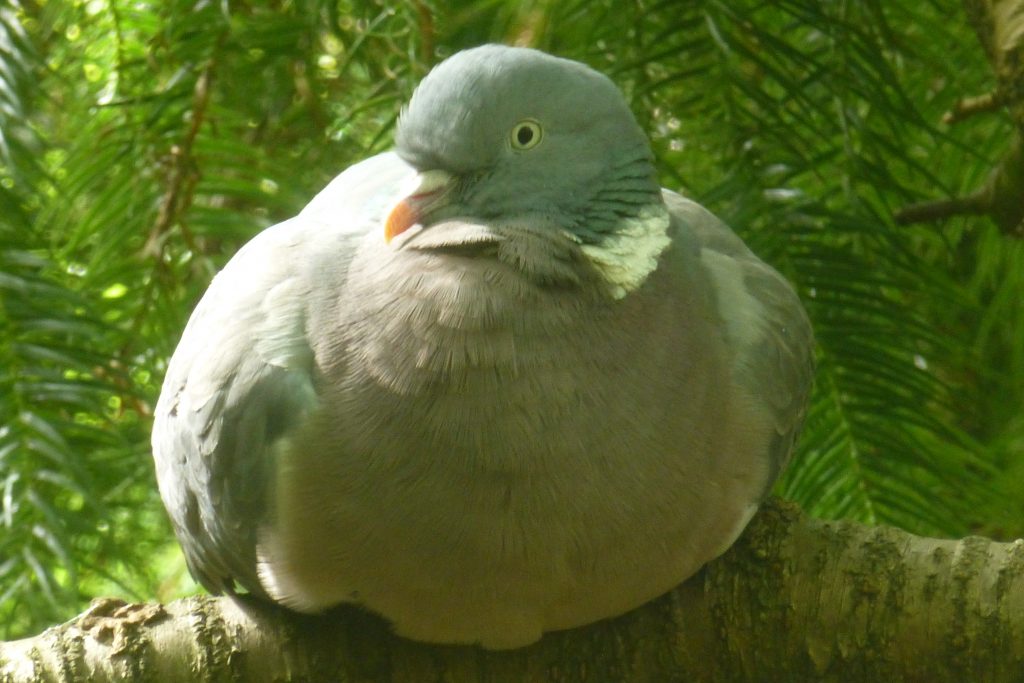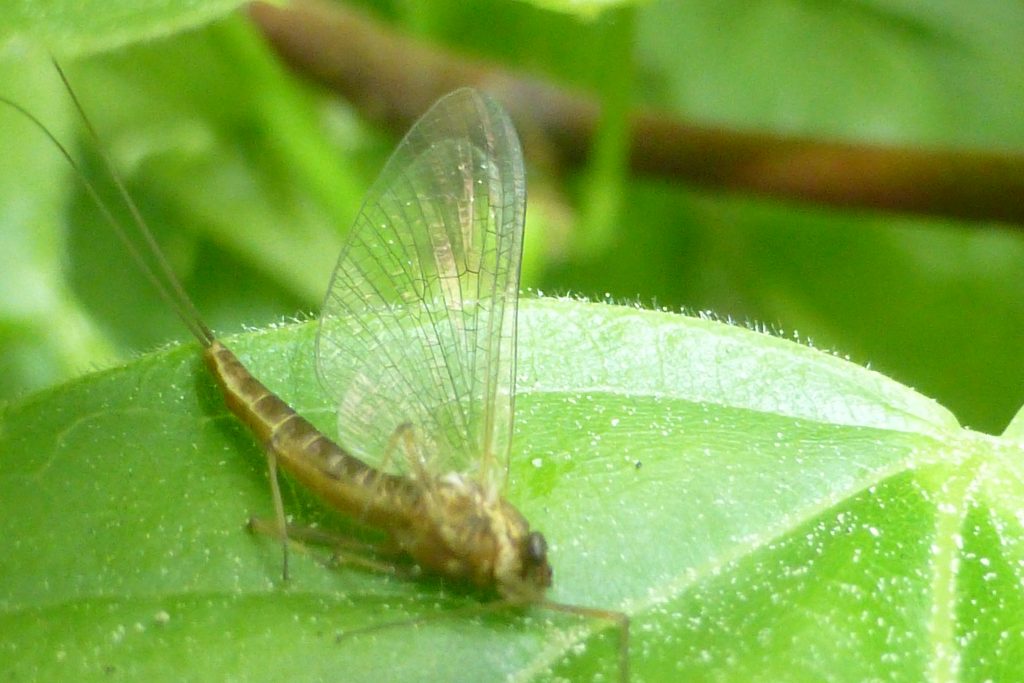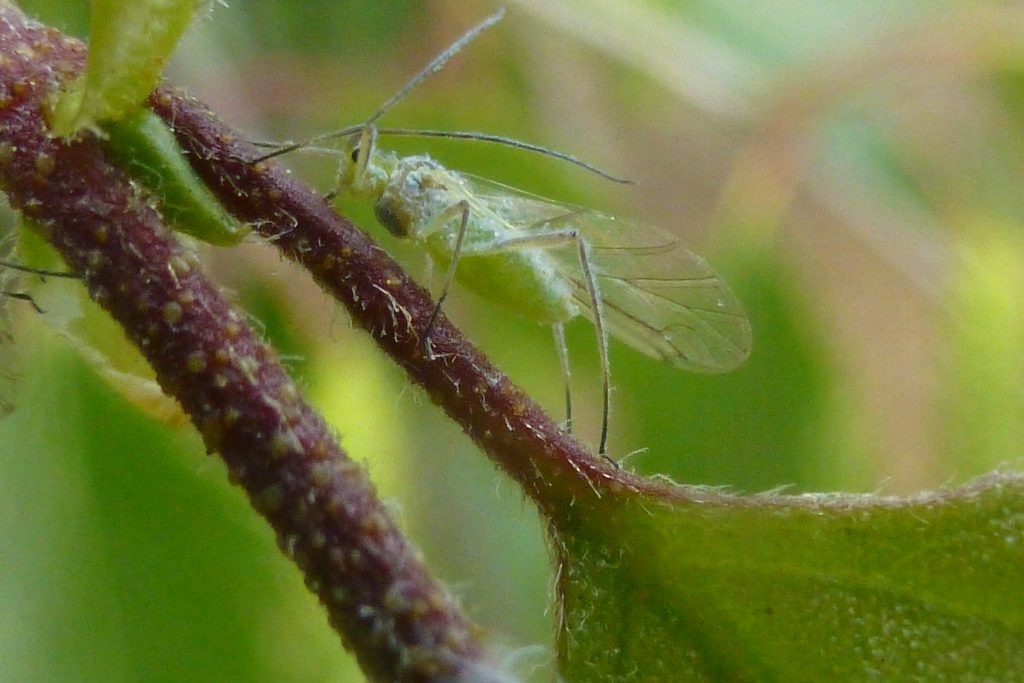June 2016 was gloriously warm and sunny. for the first week, but the rest of the month was cooler and changeable with some spells of quite heavy rain and a fair amount of drizzle and mist. The Garden’s wildlife list gained five additions, taking it from 814 to 819.
Birds Thirty-seven bird species were recorded at the Botanics during June, a reasonable total considering that the peak spring migration period has now passed. Last month’s Garden Warbler was heard again (16th) while other migrants included a Swallow (27th) and numerous Swifts over the south-west corner of the Garden on the evening of 30th. A skein of seven Greylag Geese flew over the Garden heading NE on 14th. Another notable over-flying record was a Fulmar on 12th. Chiffchaffs sang all month with at least three, possibly four territories being held but, contrary to last month’s expectations, there were no further records of Willow Warbler. The complete list of 37 species recorded during June was: Blackbird, Blackcap, Black-headed Gull, Blue Tit, Bullfinch, Carrion Crow, Chaffinch, Chiffchaff, Coal Tit, Dunnock, Feral Pigeon, Fulmar, Garden Warbler, Goldcrest, Goldfinch, Great Spotted Woodpecker, Great Tit, Greenfinch, Grey Heron, Greylag Goose, Herring Gull, Jackdaw, Lesser Black-backed Gull, Long-tailed Tit, Magpie, Mallard, Moorhen, Oystercatcher, Robin, Siskin, Song Thrush, Sparrowhawk, Stock Dove, Swallow, Swift, Wood Pigeon, Wren.
Insects and other invertebrates: June was a poor month for butterflies, with only four records of three species. However two of the three species had not been previously recorded at the Garden during 2016. Small White was recorded on 3rd and 6th while there were single records of Green-veined White (27th) and Ringlet (28th). Four day-flying moth species were seen. These included Diamond-back (10th and 16th); the sightings of this species were part of a UK-wide mass invasion of this migrant species from the Mediterranean and North Africa and were written up as a separate Botanics Story (http://stories.rbge.org.uk/archives/20594). The other three day-flying moths seen in June were Common White Wave (2nd), Silver-ground Carpet (three dates from 8th) and Nettle-tap (21st and 28th). Honey Bees and six bumble-bee species were seen throughout the month – the latter including Tree Bumblebee, first recorded as recently as 2014 but now seen nearly as frequently as species such as Buff-tailed Bumblebee. The year’s first Wool Carder Bee was seen on 7th with one other sighting on 29th; the damp weather no doubt contributed to a poor showing of this species so far this year. The cuckoo bee Nomada marshamella was seen in the Rock Garden on 1st and 6th; although it is a bee, it looks remarkably like a wasp. Hoverfly numbers and diversity began to pick up, with eleven species being recorded. Another crane fly was added to the Garden’s list, this time Tipula fascipennis (21st). Azure Damselflies were only seen twice, on 6th and 28th, both single individuals, the earlier one at the lochan in the Scottish Heath Garden and the later one resting on a thistle leaf in the south-west area of the Garden. A dead mayfly found on a lime leaf near the Garden’s southern perimeter on 7th proved after expert identification by Craig Macadam to be an Olive Upright, Rhitrogena semicolorata, a new Garden record and only the second mayfly record for the Edinburgh Garden. Most likely it had emerged from the nearby Water of Leith where it is apparently abundant. The owl midge Pericoma cf. blandula, first recorded last month, was seen again (13th). Gorse Shield-bug (20th), Forest Shield-bug (four dates from 1st) and Common Flower-bug (2nd) were all recorded, as well as several aphid species. The latter included Adelges cooleyi, which forms galls along the branchlets of Sitka spruce and was a new Garden record (first noticed on 8th), and Silver Birch Aphid (7th, see photo). Ladybird records included a pupa of 2-spot on 9th, 7-spot adults on 9th and 27th, two totally different variants of adult 10-spot (3rd and 9th), adult 14-spot on 2nd, and another record of Eyed Ladybird. Red Lily Weevil (Lilioceris lilii) was recorded by Garden staff on 1st resulting in a mass email to all staff alerting us to this pest of lilies and fritillaries. Two-banded Longhorn Beetle (Rhagium bifasciatum), an individual of which flew in to the East Gate lodge on 21st, was another new Garden beetle record. Arachnids included Cucumber Spider on 13th and several species of gall-forming mite.



